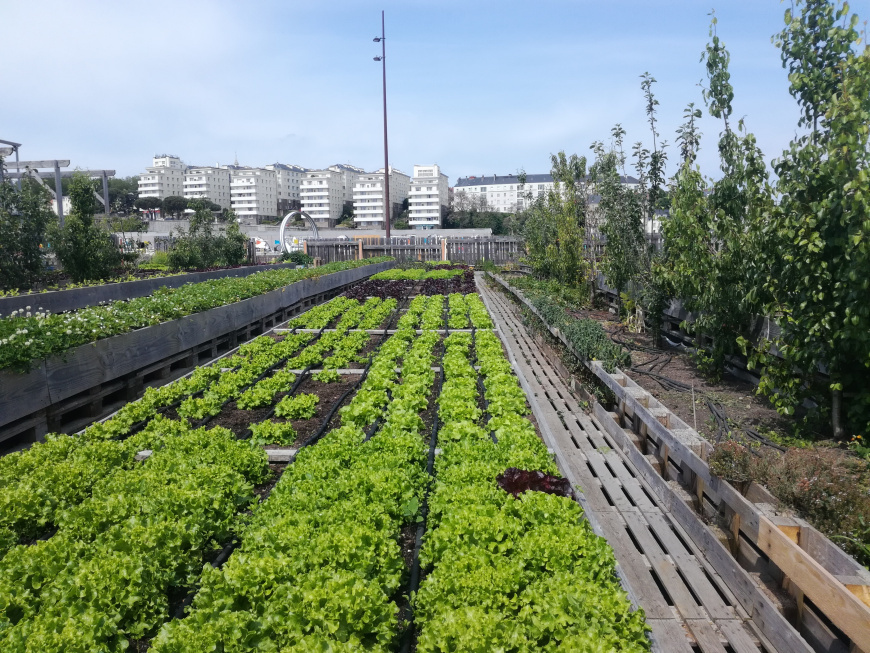How City Blooming can Save You Time, Stress, and Money.
How City Blooming can Save You Time, Stress, and Money.
Blog Article
The 8-Second Trick For City Blooming
Table of ContentsGet This Report about City BloomingThe 10-Minute Rule for City BloomingThe smart Trick of City Blooming That Nobody is DiscussingCity Blooming Fundamentals ExplainedThings about City Blooming
Intrigued in growing food for sale in the City of Chicago? Below is a listing of often asked concerns relating to the guidelines and regulations that farmers should think about when planning a metropolitan farming job.
The zoning change does not modify any various other codes taking care of composting, structure licenses, purchasing or renting City owned residential property, organization licenses or environmental contamination. There are existing codes that manage these concerns and they remain in complete effect and may be applicable to your project. Neighborhood yards are usually possessed or managed by public entities, civic companies or community-based companies and preserved by volunteers.
Urban ranches expand food that is planned to be marketed, either on a nonprofit or for-profit basis. Due to their commercial purpose, metropolitan farms require a business license.
The smart Trick of City Blooming That Nobody is Discussing
Composting is allowed however only for plant material that is produced and used on website. The quantity of compost product can not surpass 25 cubic yards at any provided time according to the criteria in 7-28-715 of the City's Municipal Code. Yes. Since the dirt at a lot of new yard websites needs amending, compost, soil, timber chips, or various other materials can be acquired to build or improve the expanding room - sustainable gardening.

If a building permit is called for then the hoophouse will be taken into consideration an accessory structure. You can discover more regarding the building permit needs by contacting the Division of Buildings. The 25,000-square-foot size restriction is meant to stop a solitary area garden from controling an offered block or diminishing the block's existing residential or business character.
The restriction does not apply to yards found in Public Open Space (POS) areas. Can there be greater than one area yard that is 25,000 square feet on a solitary block? Yes. The size limit relates to private gardens, not to specific blocks. No. Fencing is not required, click this link however, gardens that have large auto parking areas may be required to set up secure fencing or other landscaping attributes.
3 Simple Techniques For City Blooming
B1 & B2 districts require that all business usage tasks be performed inside your home. Is secure fencing needed for urban ranches? Fences might be needed, along with landscaping and testing, for particular vehicle parking areas and exterior work or storage locations depending on place and the particular task taking location.
Yes. Urban ranches call for building licenses and zoning approvals prior to building. Other types of city review may be called for relying on details structures, activities, size, landscaping, licensing, public heath and stormwater monitoring problems. Many of these requirements are identified in the task layout or allowing process, nevertheless, the applicant may be responsible to individually determine particular licenses or allows that might be called for.
Yes. The kind of license is identified by what is happening at the website. The Department of Service Affairs and Consumer Protection can aid identify the specific sort of service certificate that's needed. Yes. Off street car park is required for most industrial tasks in Chicago. The needed variety of garage is based on the number of workers servicing website and not the square video footage of the expanding space.
The 45-Second Trick For City Blooming

A metropolitan ranch can market compost material produced on site, nevertheless, the operation needs to conform with the regulations in 7-28-715 of the Chicago Municipal Code. Aquaponic systems are allowed indoors on city farms in numerous zoning areas.
As much as five hives or nests of honey may be kept as an accessory use. Nevertheless, beekeepers should sign up with the Illinois Division of Farming. For additional information regarding the recommended zoning change you may get in touch with the Department of Housing and Economic Growth, Bureau of Planning and Zoning at 312.744.8563.
, which takes place in country locations at the edge of residential areas.
Little Known Questions About City Blooming.
It can involve a movement of natural cultivators, "foodies" and "locavores", that look for to create social media networks based on a shared principles of nature and neighborhood holism. These networks can create by method of formal institutional assistance, coming to be integrated right into regional community preparation as a "transition community" activity for sustainable city growth.
The a lot more straight access to fresh veggie, fruit, and meat products that may be become aware via metropolitan farming can boost food security and food security while reducing food miles, leading to reduced greenhouse gas discharges, consequently contributing to environment change mitigation. A few of the initial evidence of metropolitan farming originates from Mesopotamia.
Report this page